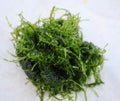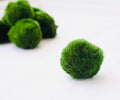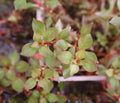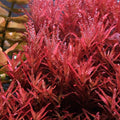Most Common Myths About Fishkeeping (Part 2)
Most Common Myths About Fishkeeping (Part 2)
Water changes are not permitted when the tank is cycling.
Actually, this is harmful in addition to being false. While the tank is cycling, you can and should do water changes. If the water changes are minor, they will actually lessen the stress that your fish experience due to "new tank syndrome," which will also help you experience less stress and less loss as the tank cycles.
Algae eaters will maintain a clean aquarium.
This one really gets on my nerves. I am aware that this is somewhat of a sales pitch and partially a pipe dream. There isn't a magic wand that can perform all of the job duties that aquarium owners desire. Fish are unlikely to effectively remove algae from the tank; the only effective method is to scrub.
Before adding fish, let your tank rest.
Many individuals may advise you to wait a week, a month, three weeks, two months, or any other arbitrary amount of time before adding fish to your tank. Although the tank can't technically start cycling until you have fish, this process is sometimes referred to as "cycling" the tank. Other times, the tank is simply described as "setting." In any case, it is a pointless step in aquarium setup.
Cycling with fish is cruel and hazardous.
Actually, adding fish to your new aquarium to cycle it is the quickest, simplest, safest, most dependable, and most compassionate method. If you cycle your aquarium with too many fish or neglect to do the additional water changes that are required throughout the cycling process, it might be dangerous for your fish. Contrarily, riding without fish, commonly referred to as "fishless cycling," is risky, difficult, and costly. In fact, if you cycle a tank without fish, you're more likely to later add fish to an uncycled tank and unintentionally cycle it with too many fish and insufficient water changes.
Beginner fish tanks should be small, such as 2, 3, or 5-gallon aquariums.
These little fish tanks really need a lot of upkeep and are prone to issues. Only very experienced aquarium keepers who have a lot of experience caring for fish tanks and who are prepared and willing to take on the challenge presented by one of these tiny aquariums—and who are not concerned about the cruelty inherent in such tiny tanks—should consider buying one of these tiny aquariums. Good starting fish tanks are usually between 15 and 30 gallons, or 60 and 120 liters.
Your fish tank's cycle will be accelerated by adding water from an existing aquarium.
The surfaces of solid fish tank items are nearly entirely where the helpful bacteria of the biological filter thrive. A new aquarium will take less time to cycle than an existing aquarium because some bacteria will be transferred from the older aquarium to the new aquarium when water is transferred between the two. However, this difference will be extremely small.
Carbon is a must-have for aquarium filtration.
This fallacy, in my opinion, was created by the widespread use of carbon-based filtering devices. Carbon is not only not essential for aquarium filtration, but under certain circumstances it might harm the tank. However, if you are using liquid plant foods or treating the tank with medicine, you should assume that if the carbon is working, the food or medicine is being removed from the tank more or less immediately and is not having any beneficial effects.
This is true for the majority of aquariums that have carbon filtration systems, which are generally appropriate. Additionally, if the carbon in the filter is not constantly replaced, it may have harmful side effects.
Also, many filtration systems, like under-gravel filters, use carbon cartridges that are so small that they don't help the tank in the long run and can block the flow of water through the filter, making the system less effective as a whole.
To maintain your tank's health, you must continually add a number of chemicals.
You can purchase and add various chemicals to your fish tank.In very few instances, you just need to add a dechlorinator, and that should only be done when adding fresh water to the fish tank (preferably before the water is added to the tank).
Your fish tank will cycle faster with feeder goldfish.
This is connected to the myth that goldfish are dirty fish, as was mentioned above, as well as the myth that a fish tank would cycle more quickly if the ammonia level was higher. Feeder goldfish are a poor option for aquarium cycling and won't help your tank cycle any quicker.
A high ammonia level is necessary for an aquarium to cycle.
Because ammonia removes dissolved oxygen from water, the biological filter will take longer to cycle as ammonia levels rise.This is only one of the numerous factors that make doing small water changes when the fish tank is cycling so crucial.
To put it simply, all of these misconceptions are untrue. Some of them might be potentially harmful to you or your fish. Some will simply raise the cost of fishkeeping for you or make it more difficult. Don't forget to research the sources you're utilizing and assess the information they're offering.
















